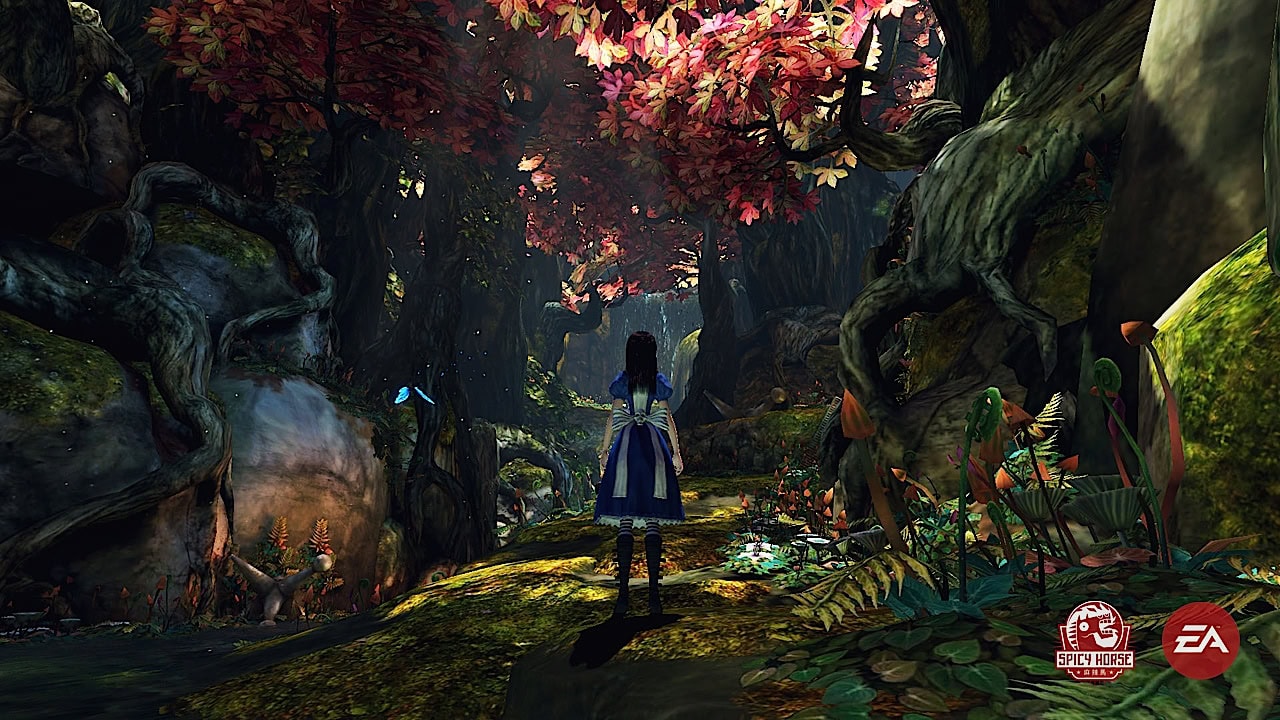
Confetti’s Cozy Corner: Alice Madness Returns – confronting nonsensical reality within a fractured wonderful mind
It’s ‘Throwback Thursday’ and it also happens to be my birthday today. In honor of both occasions, I want to tell you all about one of my favorite, but slightly older indie games. If you like games that lean more to the dark twisted aesthetic, I have to recommend American McGee’s Alice: Madness Returns.
To understand Alice: Madness Returns we must briefly highlight the plot of the first game in the series, as getting access to play the game can be difficult unlike the sequel.
In American McGee’s Alice, Alice Liddle survived a house fire that killed her parents and left her with severe burns and psychological trauma. As a result, Alice was admitted into Rutledge Asylum where in reality she remained in a catatonic state for many years; however, her mind created Wonderland, where she meets the White Rabbit, Cheshire Cat, Hatter and Queen of Hearts.
Wonderland is not the vibrant place we are familiar with from the Disney tale; this Wonderland has a ghastly and dark vibe that is a direct reflection of Alice’s broken mind. Alice learns that each character she meets, interacts with, or fights, are connected to her in some way in the real world. With each victory, loss and strength gained, she attempts to confront her grief and guilt over the death of her parents, Alice eventually wakes up and leaves the asylum.

Alice: Madness Returns is an action adventure platformer where you play as Alice who lives in the gritty reality of a fictional based Victorian London.
The game begins in the dull, gray, melancholy London based orphanage, where a now 19 year old Alice resides. While she is no longer committed to the asylum, Alice is under the care of child psychiatrist Dr. Angus Bumby whose methodology of care and dealing with trauma is to use hypnosis to suppress memories. For Alice the trauma of the fire, her parents death and subsequent years long coma are worth forgetting; but she still has hallucinations of Wonderland.

While Alice believes she is fine, she ultimately ends up getting ‘stuck’ in her hallucinations and is transported back to Wonderland, but something is very wrong. Wonderland looks like it is being corrupted by a dark force. Throughout the game Alice jumps between reality and this corrupted Wonderland seeking the answers behind the fire that killed her family and confronting her grief head on.

Alice meets the residents of Wonderland, some players should be familiar with and some new characters. Alice learns that the big evil from her last visit to Wonderland is not dead and not only must she defeat this evil once and for all, but also face the source that is corrupting Wonderland. The closer Alice gets to that source, the more we learn about her past unclouded from her trauma, grief and suppressed memories.

Throughout the game, you may find yourself asking: “Is Alice more mad than she lets on?”
What I enjoy the most about this game is that it takes a psychological view of the pure absurdity that is the plot of Alice in Wonderland. While Lewis Carroll’s ‘Alice’s Adventures in Wonderland’ novel is a great example of the ‘literary nonsense’ genre, the realm of Wonderland does have a sort of order; an order that is pure nonsense in the real world. What’s great about American McGee’s Alice and Alice: Madness Returns, is it brilliantly blends the nonsensical world of Wonderland with Alice’s reality.
From an observer’s view it makes sense in reality if someone was living with hallucinations of following a talking White Rabbit with a pocket watch and waistcoat down a hole in a tree and was suddenly transported to another world or dimension, we would definitely have some follow up questions.
However, linking the source of the hallucination to Alice’s trauma and grief normalizes what she is experiencing. It challenges the ‘Is Alice mad?’ theory, and makes it apparent that she is coping with her trauma and loss as best as a child can. Sometimes the safest place many children feel is in their imagination where seemingly the harshness of the real world cannot reach them.

There are some plot holes and rushed points within the game, which do put a bit of a downer on the experience. As a sequel, Alice: Madness Returns did back off the horror elements that were present in American McGee’s Alice, while some darker plot points did not seem very necessary to the plot at all.
While the game mechanics were improved SUBSTANTIALLY between the first and second game, sometimes the linear, near claustrophobic feeling the first game had was very much missed. We will not know how the series ultimately ends because American McGee is now retired and the indie studio who developed both games, Spicy Horse, has been closed since 2016. There were plans of turning the Alice series into a show or movie, but the project has yet to be picked up.
If it was not apparent from the themes of this game centering on childhood trauma, grief and loss, there are some pretty heavy topics dealt with in Alice: Madness Returns. It is rated M 17+ for Mature audiences, so please do your due diligence to see if this is a title that you would be able to play as it features blood, gore, sexual themes, strong language, and violence.
Video games as a medium have the ability to create stories that can approach themes such as childhood trauma, grief, loss, and triumph, and open avenues to learn, reflect and empathize with them. Even if that’s through the metaphor of battling giant corrupted monsters with an enormous pepper shaker.
Everyone eventually experiences loss and grief at some point, it is a very human experience we all have in common. But we also have the ability within us to face and grow beyond grief, and heal and work towards a better, more hopeful tomorrow.








